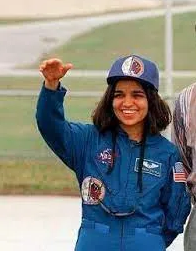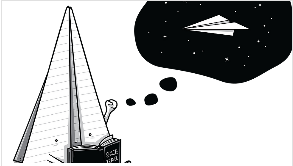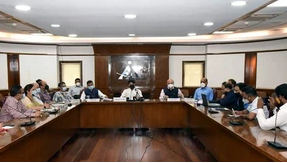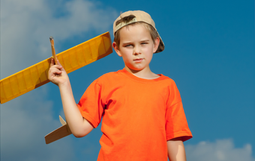Drones have revolutionized the way we collect data and carry out various activities, and mapping and surveying are no exceptions. The use of drones has made it easier, more cost-effective, and more accurate to carry out these tasks. One technology that has made this possible is Lidar (Light Detection and Ranging).
Lidar technology is essentially the use of lasers to measure distances, and this technique has proven to be very effective in mapping and surveying applications. When deployed on drones, Lidar sensors can create precise 3D maps of the terrain or structures below, making it ideal for various industries such as mining, construction, and surveying.
The use of drones offers several advantages when it comes to mapping and surveying. Firstly, drones access areas that are difficult to reach or unsafe for humans, such as mountainous regions, disaster-stricken areas, or even industrial complexes. Secondly, drones can collect data in a fraction of the time it would take a human crew to do the same job. Thirdly, the data collected by drones is much more accurate and consistent compared to traditional surveying methods which could be error-prone.
Lidar technology combined with drones has made mapping and surveying more efficient, cost-effective, and with accurate results. With this technology, industries can perform more check-ups and increase productivity. Mapping and surveying tasks no longer have to be a headache as Lidar technology presents an innovative solution. Are you ready to get on this ride with AEROGO?
1. Understanding Lidar Technology
Lidar technology has revolutionized the way mapping and surveying have been done. It has paved the way for a more efficient and accurate approach to these fields. But what exactly is Lidar technology, and how does it work?
1.1 What is Lidar Technology?
Lidar, short for Light Detection and Ranging, is a remote sensing method that utilizes light to measure distances. Lidar systems emit laser pulses towards the ground, and the time taken for the pulse to return to the sensor is used to calculate the distance between the sensor and the ground. These measurements are then interpolated to create a point cloud that represents the terrain being sensed.
1.2 How does Lidar Technology work?
A typical drone-based Lidar system consists of four main components: the laser scanner, the GPS unit, the inertial measurement unit (IMU), and the onboard computer. The laser scanner emits infrared laser pulses towards the ground, which are then reflected back to the scanner by the terrain or any object present on it. The GPS unit and IMU work together to accurately measure the drone's position and orientation in the air. Finally, the onboard computer processes the data collected by the laser scanner and creates a 3D model of the environment.
1.3 Types of Lidar systems used in UAVs
There are primarily two types of Lidar systems used in drones: topographic and bathymetric Lidar. Topographic Lidar is used to create accurate 3D models of land surfaces and objects on the ground, including buildings, trees, and other features of the environment. Bathymetric Lidar, on the other hand, is used to map the bottom of water bodies, such as oceans, lakes, and rivers, to create depth charts.
Overall, Lidar technology has proven to be a game-changer in the fields of mapping and surveying. It provides highly accurate and reliable data in a short amount of time, making it an invaluable tool for industries such as construction, archaeology, and environmental monitoring. However, there are certain limitations and challenges associated with Lidar technology that must be considered before opting for this approach. The limitations and challenges will be discussed in the subsequent section.
2. Applications of LIDAR Technology in Mapping
Lidar technology has provided the ability to capture highly detailed and accurate data that can be utilized for mapping and surveying. And when Lidar technology is combined with the capabilities of drones, the possibilities of aerial mapping and surveying are virtually endless.
2.1 3D Mapping
3D mapping and modelling are enhanced by utilizing the combination of Lidar sensors and drones. The sensors on the drones are capable of emitting laser beams to capture a 3D map of an area from an aerial viewpoint. The mapping and modelling process can be used for various applications including urban planning, construction, and environmental monitoring.
2.2 Modelling of the Terrain
Terrain modelling is facilitated by generating detailed elevation models from Lidar data collected by drones. This elevation data provides critical information required in various fields such as disaster risk management, geological surveys, and land management. With drones, inaccessible regions can be explored safely and efficiently, allowing surveyors to collect data from various vantage points to create detailed and precise terrain maps.
2.3 Environmental Monitoring
Environmental monitoring is vital to mitigate the impacts of various environmental changes. Lidar technology, when used with drones, makes it easier to gather data from remote areas, even those that are difficult to access. Monitoring areas affected by natural disasters is now more manageable with the availability of drones to collect data more efficiently.
Urban planning is optimized by leveraging the combination of drones and Lidar technology. With urban areas evolving constantly, the capabilities of drones to capture data and Lidar technology's potential to create highly accurate 3D models is incredibly useful. The data collected assist urban planners to anticipate and mitigate possible future issues with regard to city planning, transportation, and infrastructure development.
3. Applications of Lidar Technology in Surveying
Mapping and surveying is one of the most popular applications of drones equipped with Lidar technology. It has revolutionized the way various industries conduct their mapping and surveying operations. Let's look at some of the specific applications where Lidar technology has made a significant impact:
3.1 Infrastructural Surveying
In construction sites, mapping and monitoring with drones is crucial to ensure that the project stays on schedule and within budget. Drones equipped with Lidar technology provide high-resolution images and precise measurements of the site, which helps in project planning, monitoring site progress, and identifying potential issues.
3.2 Land Surveying
Land surveying is a challenging task that requires meticulous precision. With drones, land surveying is made much easier and more efficient with the help of Lidar technology. It provides topographic data with high accuracy and detailed 3D models that can be used for contour mapping and volume calculations.
3.3 Archaeological surveying
Archaeological surveying is another area where drones equipped with Lidar technology have proven to be highly effective. This technology helps in identifying potential sites more efficiently through high-resolution imaging and surveying historic sites without causing any physical damage.
3.4 Mining and quarry mapping
Mining and quarry mapping is a dangerous job, and drones have offered a safer and more efficient way to survey such sites. Drones equipped with Lidar technology can create highly accurate 3D models of these complex sites, allowing for better management of resources, and more efficient planning of site layouts.
Overall, drones equipped with Lidar technology have transformed the field of mapping and surveying, leading to greater efficiency, cost savings, and improved accuracy. These advancements make Lidar technology an essential tool for professionals in the field and a highly sought-after skill set.
4. Challenges and Limitations of Lidar Technology
Lidar technology has revolutionized drone-based mapping and surveying, but like any technology, it comes with its own unique set of challenges and limitations.
4.1 Weather Conditions
One of the most significant limitations of lidar technology is its susceptibility to weather conditions. Precipitation, fog, and even dust can interfere with the accuracy of the lidar system, resulting in incomplete or inaccurate data. This limitation means that operators may have to reschedule mapping or surveying missions if the weather is not favourable.
4.2 Interference with other LIDAR
Interference with other lidar systems is another challenge posed by lidar technology. There is a risk of interference when multiple lidar systems are used simultaneously in the same airspace(Drone Swarms). This interference can compromise the accuracy of data collected by each system and could lead to unwanted collisions.
4.3 Data Processing
Challenges in data processing also arise in lidar technology. The dense point cloud data produced by lidar systems require powerful computing systems to process and analyze data, which can be time-consuming and resource-intensive. Therefore, it is essential to have skilled personnel involved in data processing, which can be a challenge for many organizations.
Despite these challenges, lidar technology remains a game-changer in the mapping and surveying industry. Understanding these challenges and limitations is crucial to ensuring that the technology is used effectively. By working closely with skilled data processors, operators can optimize the capabilities of lidar technology to deliver accurate and reliable results.
5. Future of Lidar Technology in Drone-based Mapping and Surveying
As Lidar technology continues to evolve, we can expect to see many exciting developments in the world of drone-based mapping and surveying. Emerging technologies such as solid-state Lidar and photon-counting Lidar are already transforming the way we gather and process data, while integration with other mapping and surveying tools is making the process more streamlined and efficient. The potential for growth in various industries, including construction, mining, and environmental monitoring, is enormous, and we can look forward to seeing many more exciting applications in the years to come.
Conclusion
Lidar technology has revolutionized the way mapping and surveying is done. The use of drones equipped with Lidar systems provides accurate and efficient data collection for various industries such as construction, mining, and urban planning, among others. Despite the challenges and limitations posed by weather conditions and data processing, Lidar technology's future is bright, with the emergence of more advanced systems and integration with other mapping and surveying tools. The utilization of the combination of drones and Lidar technology has revolutionized the mapping and surveying industry. The applications of such technologies are vast, ranging from mapping inaccessible areas to environmental monitoring and urban planning. With drones and Lidar technology, surveyors and mappers can generate highly precise data with remarkable efficiency, providing valuable insights for various applications in different fields. The potential growth in various industries makes Lidar technology a vital tool for the future of mapping and surveying. Now to keep yourself up-to-date with the technology and to learn hands-on with Lidar technology in drones join AEROGO drone training.
























Comments